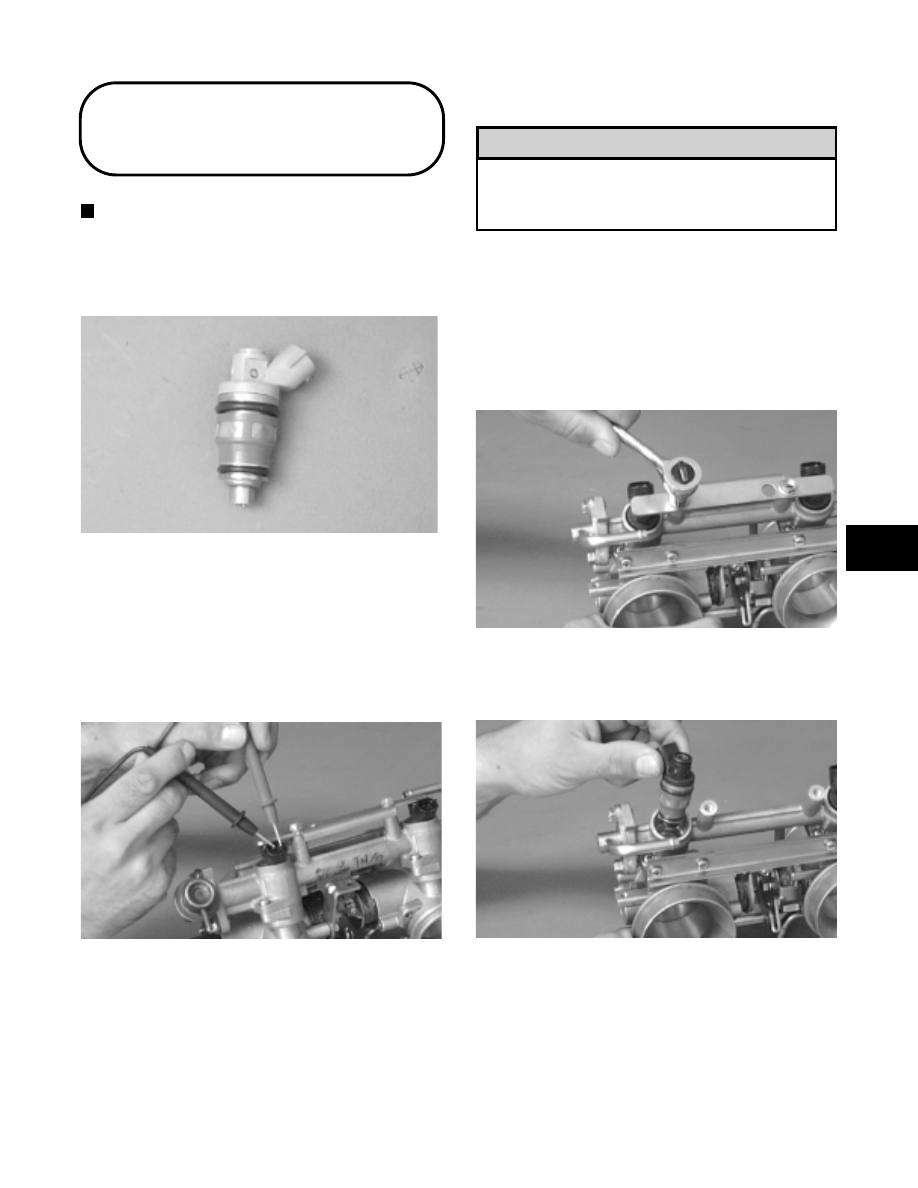Snowmobile Arctic Cat (2000 year). Instruction - part 56

Testing Individual
Components
NOTE: For the following tests, use the Fluke
Model 73 Multimeter (p/n 0644-191) or a multimeter
of the same quality.
FUEL INJECTORS
Fig. 4-122
AO139D
Testing Resistance/Voltage
1. Disconnect the fuel injector wiring harness.
2. Set the meter selector to the OHMS scale.
3. Test between the two injector terminals. Test
specification is 2.4 - 3.3 ohms.
Fig. 4-123
AO144D
4. If not within specifications, replace the injector.
Removing
The fuel supply hose may be under pressure.
Place an absorbent towel around the connection
to absorb fuel; then remove the hose slowly to
release the pressure.
1. Loosen the clamp securing the fuel supply hose to
the fuel rail; then remove the hose from the fuel rail.
2. Disconnect the wiring harness from each injector.
3. Remove the two screws securing the injector
hold-down plate to the throttle body assembly; then
remove the plate from the injectors.
Fig. 4-124
AO145D
4. Remove the fuel injectors from the throttle body
assembly.
Fig. 4-125
AO146D
Installing
1. Apply a light coat of oil to all O-rings; then install
the upper and lower O-rings onto each injector.
2. Install the injectors into the throttle body assembly.
! CAUTION
4
4-43